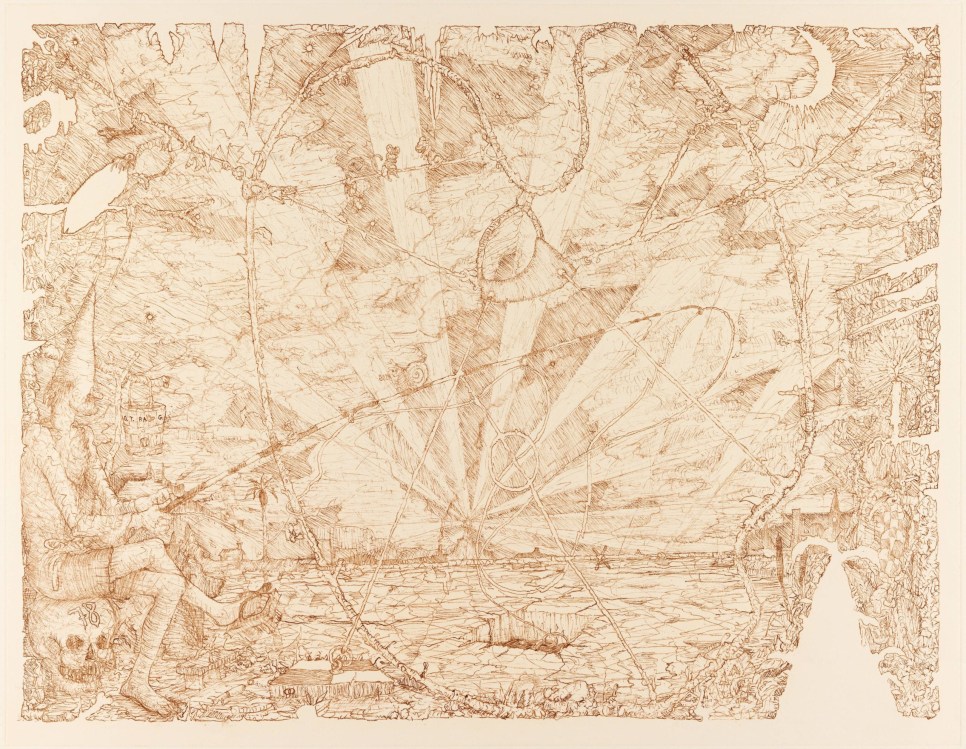
About
William T. Wiley is a contemporary American artist. Maintaining an eclectic practice that has been associated with the Funk Art movement, Wiley incorporates drawing, painting, sculpture, performance, and filmmaking into his work. His paintings act as an aggregate and are composed of a wide range of obsessive marks, materials, and mediums, frequently layered on top of a map or other information-coded images. Often featuring illustrations of fantastical universes, his works contain both historical literary references and integrate geometric abstraction. Born in Bedford, IN on October 21, 1937, he earned both his BFA and MFA from the California School of Fine Arts shortly before joining the UC Davis Art faculty in 1963, where he would instruct and influence prominent artists like Bruce Nauman. Wiley has enjoyed widespread acclaim and success, participating in both the Venice and Whitney Biennials in 1980 and 1983, respectively. His work is held in many important collections, such as the Art Institute of Chicago, The Museum of Modern Art in New York, and the Smithsonian American Art Museum in Washington, D.C. The 2009–2010 exhibition “What's It All Mean: William T. Wiley in Retrospect,” offered a comprehensive retrospective of Wiley's career.
